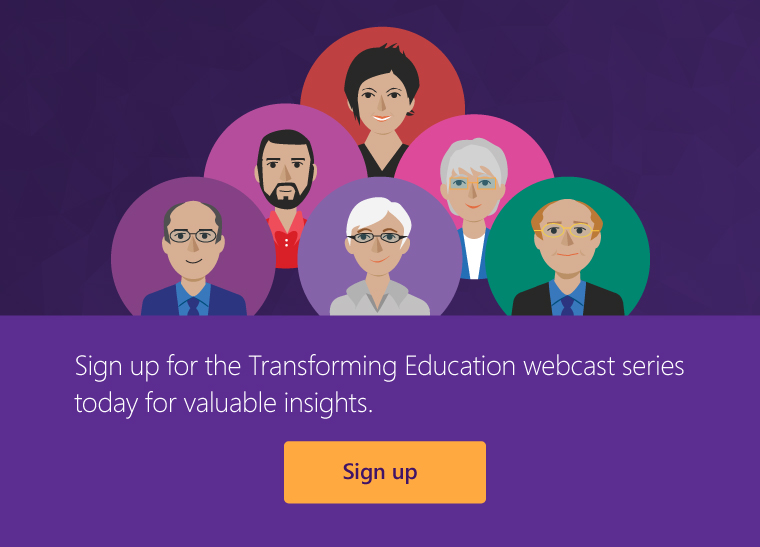
How Kansas State uses analytics to chase a top 50 distinction
| Focus on: Empowering educators, optimizing operations |
Development officers in the College of Engineering at Kansas State University are on their way to visit a major airplane manufacturer in the hopes of securing donations to the school’s foundation. Knowing that the company will ask for detailed specifics about past sponsorships, research efforts, and results, the team quickly pulls together the research and is well prepared for the meeting.
Across campus at the College of Agriculture, Terri is generating a detailed report of each faculty member’s research activity for the Dean of the Agricultural Experiment Station. This data will be used to determine which faculty members should be offered a retention incentive.
And in the Career Center, Mary is creating a public dashboard that shows internships by college and major for each academic year. She also creates a chart showing internships by company and location, accompanied by maps of the United States and the world that shows where students are working and whether they’re earning college credit. Mary is not a data professional, nor does she work in IT, but the reports are visually appealing and provide much-needed information for students, parents, companies, and other stakeholders.

Committed to distinction
Kansas State University has a rich history. Opened in 1863—the same year that Kansas became part of the United States—it was the first fully operational land-grant college in America. One hundred and fifty four years later, the school has impressive numbers—it has awarded $230 million in scholarships, grants, loans, and work-study programs across its four campuses and nearly 24,000 students—and lofty goals to match: K-State has committed to becoming a top 50 public research university by 2025.
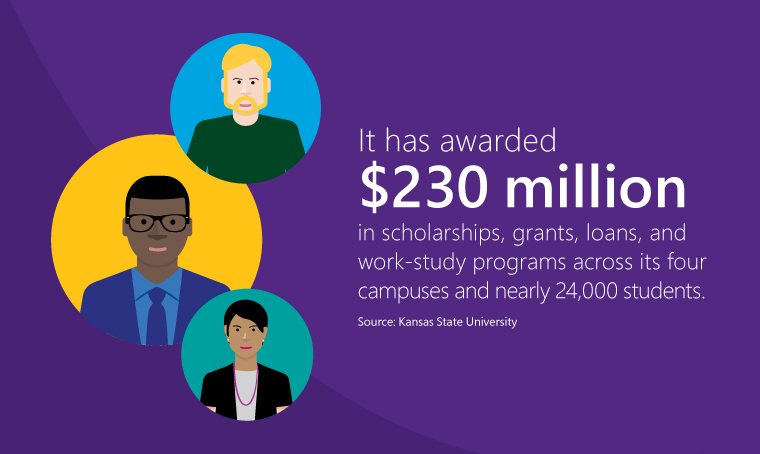
Achieving that distinction will put the institution in good company. Iowa State, North Carolina State, and Washington State all made the list last year. K-State’s pledge to join them has required a massive rethink in the way the school views and applies data. Enter the K-State Analytics team.
The K-State Analytics team in the Information Systems Office is leading the charge. Business analytics offer universities more thorough, relevant, and real-time information in an effort to make faster, more informed, data-driven decisions. The team is responsible for providing the enterprise analytics foundation and promoting analytics use across the university.
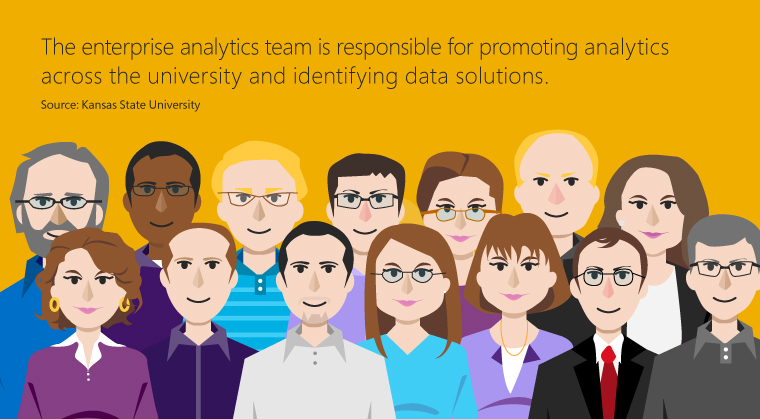
Digital transformation is a movement that is creating unprecedented opportunities for organizations of all shapes and sizes to reinvent themselves as digital-first enterprises. In academia, the shift to a digital environment means institutions can grow rapidly and position themselves for students of the future. At Kansas State University, it means optimizing operations and empowering faculty and staff on its way to becoming a top 50 public research university within the next eight years.
This is a real story of digital transformation.
Optimizing operations with a smarter data platform
K-State had already put considerable effort into ensuring adequate administrative computing systems. The problem was that while they allowed faculty and staff to look at data separately, these disparate systems were unable to see the relationships between that data without a considerable amount of time and effort from a highly technical staff.
K-State wanted to improve on reporting in these areas:
- Integrity: As reporting needs become more complex it gets increasingly difficult to consistently define the data.
- Quality: With the higher integrity of the data report quality improves across departments.
- Timeliness: Business users can more quickly access the data and generate their own reports in a timely manner.
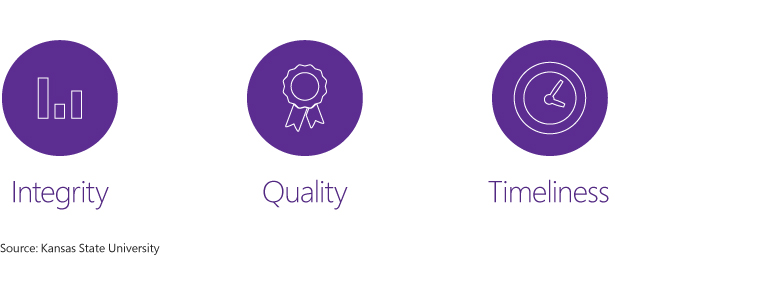
The K-State Analytics team knew they wouldn’t be able to tackle these issues alone. As part of the school’s enterprise analytics initiative, and in an effort to find a robust solution, they created a task force of data stewards to explore what other universities and colleges were doing to address these problems.
K-State’s primary audiences for the data they collected was made up of executive leadership, power users, and data consumers. To ensure that the information distributed to these core groups would be useful, the university needed to connect relevant data from multiple subject areas.
“One of the things that appeals to us is the ability to take information from disparate systems and combine it into a single report.” said Miriam Clark, business intelligence expert on the K-State Analytics team.
The school’s limited budget and minimal staffing required an innovative solution. The team researched several options including Blackboard Analytics, Oracle OBIEE, and Tableau before deciding that Microsoft was the best choice.
As K-State transitions to a unified data storage solution reports will stay up to date, maintain a standard of quality, and unite definitions across departments. Implementation of the solution is being broken up into phases based on business functions, allowing the entire university to take advantage of the enterprise data warehouse.
Empowering educators and administrators with self-service analytics
A lack of understanding led to some initial resistance to the change. Miriam and her team were able to overcome this hesitation by “showing” instead of “telling.” At her request, educators from four different universities with unified systems already in place did presentations to K-State to explain how the solution was benefiting them.
“Attitudes began to change,” Miriam says. Early adopters included the Research Proposal and Award team and an expert from the financial department.
Before the Microsoft solution there were long wait lines for standard reports. Now, accessing and running reports is not only easy, it is quick.
“The main attraction to Power BI is that its structure directly aligns with our own philosophy for coordinating assessment: rather than dictating, we want to provide a basic structure and tools that enable users to achieve their own goals.”
Power BI provides a self-service approach to analytics. Instead of searching through stacks of paper and files to gather information, university decision makers have immediate access to more of the data they need to support decisions and actions critical to their business. And because the tools are flexible and user-friendly, data is easy to visualize and apply.
Departments can easily run relational reports without the help of a technology or analytics expert. Office 365 Groups simplifies training, and a Power BI User Group encourages collaboration, facilitates learning, and strengthens the school’s community of professionals.
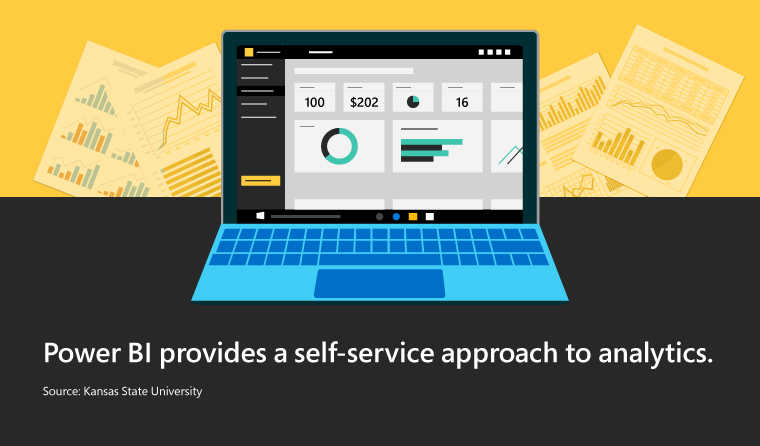
“We save time by automating data processing,” Miriam says. “Cleaning data and creating reports for surveys used to take weeks. Now it’s completed in a matter of hours using tools in Power BI’s query editor.”
The path to 2025
K-State plans to continually develop its enterprise analytics by adding additional subject areas such as student recruitment and admissions, human resources, and space utilization to connect various subject areas, enabling greater capability for data-driven decision making. The university will eventually take advantage of all the tools in Microsoft’s arsenal to continue moving towards their goal of becoming a top 50 research university. Solutions such as SharePoint, Excel, and Power BI will have a hand in getting it there.
Miriam recommends that other universities considering this type of adoption take the following 5 steps to smooth out the transition:
- Enlist executive sponsorship: Find someone who can speak the Higher Ed language and who understands the value of business intelligence. For Kansas State University, the Associate Provost for Institutional Effectiveness, filled this role. The Director of Information Systems, provided the vision, environment and resources to make it happen.
- Network with colleagues at other universities: The Microsoft Higher Education Data Community meets on a regular basis to collaborate and share ideas and projects. Members of the community have shared presentations on a wide range of business intelligence topics such as alumni dashboards, classroom utilization, retention analysis, self-service BI, data warehousing, and data governance. Presenters take turns showcasing different Microsoft data platform technologies, like Power BI, SQL Server, and Azure. The diversity of this unique community ensures strategies are formulated that work best across an array of scenarios and environments. This year the community held its first hands-on Microsoft Higher Education Data Community Forum and Hackathon to develop a working prototype.
- Find the path of least resistance: Look for an area with the fewest data owners and a simpler data set.
- Follow the path of least resistance: Partner with the experts in your organization who are interested in business intelligence and spend time with them developing detailed requirements before you begin.
- Training is key: The technical aspect of data warehouse is complicated. Provide technical as well as user training.
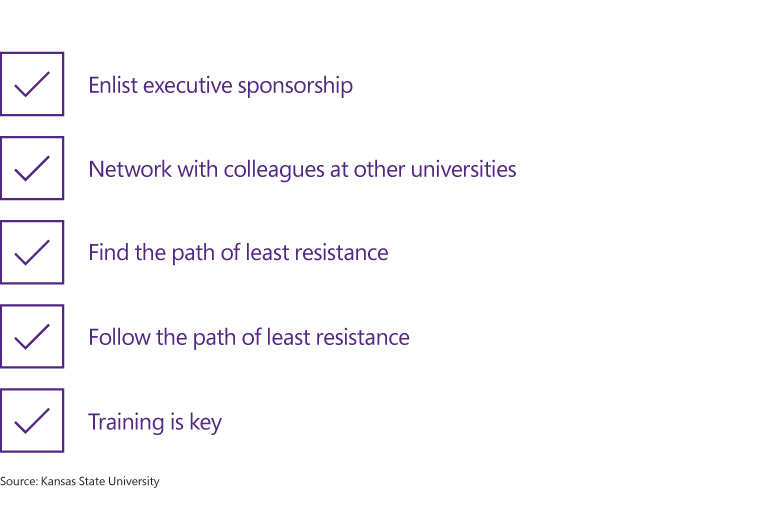
Microsoft is proud to partner with Kansas State University on their digital transformation journey to becoming a top 50 research university.
Related Content
- Read more real stories of Digital Transformation
- Learn more about Power BI and get started free
- Find out how to use data to improve student outcomes in an on-demand webcast

